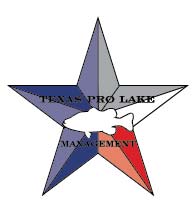Construction of South Waterfront greenway to begin despite budget shortfall
BY: Lindsey O’Brien
 Portland Parks and Recreation is moving forward with plans to build the South Waterfront Greenway, which would stretch for over a mile along the Willamette River in Southwest Portland. Construction is expected to begin this summer on the nearly $10 million project. (Photo by Sam Tenney/DJC)
Portland Parks and Recreation is moving forward with plans to build the South Waterfront Greenway, which would stretch for over a mile along the Willamette River in Southwest Portland. Construction is expected to begin this summer on the nearly $10 million project. (Photo by Sam Tenney/DJC)Portland Parks and Recreation is preparing for a lean budgetary year that could bring layoffs, park restroom closures and significant maintenance cutbacks. But construction of a long-awaited, nearly $10 million project is nevertheless expected to begin this summer, kicking off a plan to build paths and parks along the west bank of the Willamette River.
See the dozens of unique artificial fish habitat models, fish attractors and fish cover used at fishiding.com, the leader in science based, proven, fish protection.
For more than a decade, the city of Portland has planned to construct a greenway that stretches 1.2 miles from the Marquam Bridge to the River Forum Building. If federal and city permits come through, construction of the first section will begin in July.
“I know that when you look at the kinds of cuts we’re going to need to make, it may seem interesting that we’re doing some new projects,” Parks and Recreation directorMike Abbaté said. “But the plan (for the greenway) precedes the economic downturn; it’s been in pipeline for many years and its funding sources are not flexible.”
The $9.5 million “central district” project includes construction of a five-block-long mix of lawn, park and plaza areas between Southwest Gibbs Street and Lane Street. Existing pathways leading out from two condo high-rises – Atwater Place and the Meriwether – will be extended to the new green space, which will have separate paths for bikes and pedestrians and a gravel beach to improve fish habitat.
“We anticipate people walking dogs or having picnics in the lawn and enjoying the upper terrace areas and experiencing the overlook at the water’s edge,” said Chelsea McCann, principal at landscape architecture firm Walker Macy.
A broad funding package is paying for the project. The Portland Development Commission contributed $4 million in 2010, and TriMet is providing $1 million for habitatimprovements as environmental mitigation credits it needs to proceed with the Portland-to-Milwaukie light-rail project.
 Plans for the South Waterfront Greenway call for it to stretch for more than a mile along the Willamette River in Southwest Portland. The greenway will have separate paths for cyclists and pedestrians, as well as a gravel beach to improve fish habitat. (Rendering courtesy of Walker Macy)
Plans for the South Waterfront Greenway call for it to stretch for more than a mile along the Willamette River in Southwest Portland. The greenway will have separate paths for cyclists and pedestrians, as well as a gravel beach to improve fish habitat. (Rendering courtesy of Walker Macy)Portland Parks and Recreation is contributing $2.3 million from its system development charge fund, which has approximately $7.6 million, according to program manager Riley Whitcomb. Park SDCs are assessed on new developments to help pay for development of new parks, trails and natural areas.
Along with smaller contributions from private developers and the Bureau of Environmental Services, the project has secured nearly $7.8 million. Portland Parks and Recreation is seeking ways to close the funding gap.
The river’s industrial past could add to project costs. The bank is littered with concrete debris, demolition rubble, steel pipes, ship parts and even steel ship hulls.
Construction manager/general contractorJames W. Fowler Co. has investigated soil conditions and other constructability issues since it was hired last May. Design reviews and site investigations performed over the last year led to the estimated construction budget jumping from $4.8 million to $6.78 million.
Beneath the soil, hidden industrial waste could significantly impact construction, according to Scott Thibert, project manager for James W. Fowler, which is why the budget includes $926,000 for unexpected issues.
 General contractor James W. Fowler Co. is expected to begin work on the South Waterfront Greenway project this summer, as long as federal and city permits are secured. (Rendering courtesy of Walker Macy)
General contractor James W. Fowler Co. is expected to begin work on the South Waterfront Greenway project this summer, as long as federal and city permits are secured. (Rendering courtesy of Walker Macy)The first phase of the project will involve erosion control, site utilities and traffic control, Thibert said. Then, when in-water work can begin on July 1, crews will remove debris and begin work on the beach and upland areas.
Construction is expected to wrap up by summer 2013, but several rounds of approvals are required before construction can begin.
The Portland Design Commission reviewed the plans for the central district last week, but requested more information and pushed its decision back to March 1.
The commission asked the project team to study potential locations for the osprey nesting platform based on concerns expressed by neighbors, according to McCann. The team also is preparing more details about the feasibility of building a floating gangway and dock – a popular feature that appeared in early designs, but had to be removed because of concerns from federal agencies.
In addition, the team will require federal permits for removal of rubble from the bank, and final project approval from the Oregon Department of Environmental Quality. Both are expected to be granted this spring.
“(The greenway) is a really important recreational facility,” Abbaté said. “Now is the time for it.”






